Tom's Guide Verdict
The Linksys RE7350 range extender has the power to fill in Wi-Fi dead zones with limited data speeds but there’s no app to help get it started and configured.
Pros
- +
Inexpensive
- +
Excellent range
- +
Dual-band operations
- +
1 Gbps Ethernet port
- +
Customization options
Cons
- -
-No 6 GHz access
- -
Substandard speeds
- -
Doesn’t have USB port
- -
Set up and configuration via browser only
Why you can trust Tom's Guide
Wi-Fi Spec: AX1800
Number of Antennas/Removable: 2/No
Ports: None
Peak 802.11ax performance: 203.7 Mbps (10 feet from extender)
Range: 110 feet
Size: 5.2 x 3.9 x 1.8 inches
Estimated Annual Electricity Cost: $8.80
While its speeds couldn’t match the best in the business, the Linksys RE7350 is an inexpensive way to extend a wireless network to fill in Wi-Fi blank areas. It goes the extra Wi-Fi mile with excellent range and more customization choices than many of the best Wi-Fi extenders but lacks access to the 6 GHz band as it only supports Wi-Fi 6. Rather than a convenient app, the RE7350 requires using a connected browser to set it up and make changes.
Still, it could be an effective way to cover your entire house with Wi-Fi on a budget. See how it matches up with the best.
Linksys RE7350 review: Pricing and availability
With a list price of $130, the Linksys RE7350 can be had for as little as $70 at a variety of online stores, like Amazon. That’s about one-third the price of some of its competitors.
It’s been designed to add coverage for 2,000 square feet to a network.
Linksys RE7350 review: Design
The monolithic Linksys RE7350 is a dead ringer for the previous RE7310 model, although it’s been significantly upgraded. At 5.2 x 3.9 x 1.8 inches, it’s shorter and thicker than the TP-Link RE655BE and is available only in white.

The back’s two-prong AC plug goes right into a wall outlet and the unit leaves room for an additional plug. Alternatively, it can sit on its own with power coming from an extension cord. There isn't an on/off switch but the RE7350 has buttons on the side for resetting the device and starting up the Wi-Fi Protected Setup (WPS) procedure for a quickie installation.
On the bottom is a gigabit per second Ethernet port for connecting a computer, printer, storage device or other networked appliance. It’s a lot slower than the RE655BE’s 2.5 Gbps port and the extender does without a USB port for a connected storage drive.

The RE7350’s front is dominated by an LED bar that shows its status and connections. Using Linksys Spot Finder technology, the light glows blue when it’s connected and working fine. If it turns orange, it means that the extender is offline. There’s no way to turn the light off though.
Linksys RE7350 review: Performance
Using our real world testing protocol and the Keysight IxChariot networking benchmark set up to simulate 10 data-hungry users, the RE7350 proved to be a reliable way to extend a Wi-Fi 6 network in my 3,500 square foot home. It was able to push a connection from the Netgear Nighthawk RS600 router into previously uncovered areas of the house. That said, the RE7350’s overall performance lagged behind the others I tested although it had excellent range.
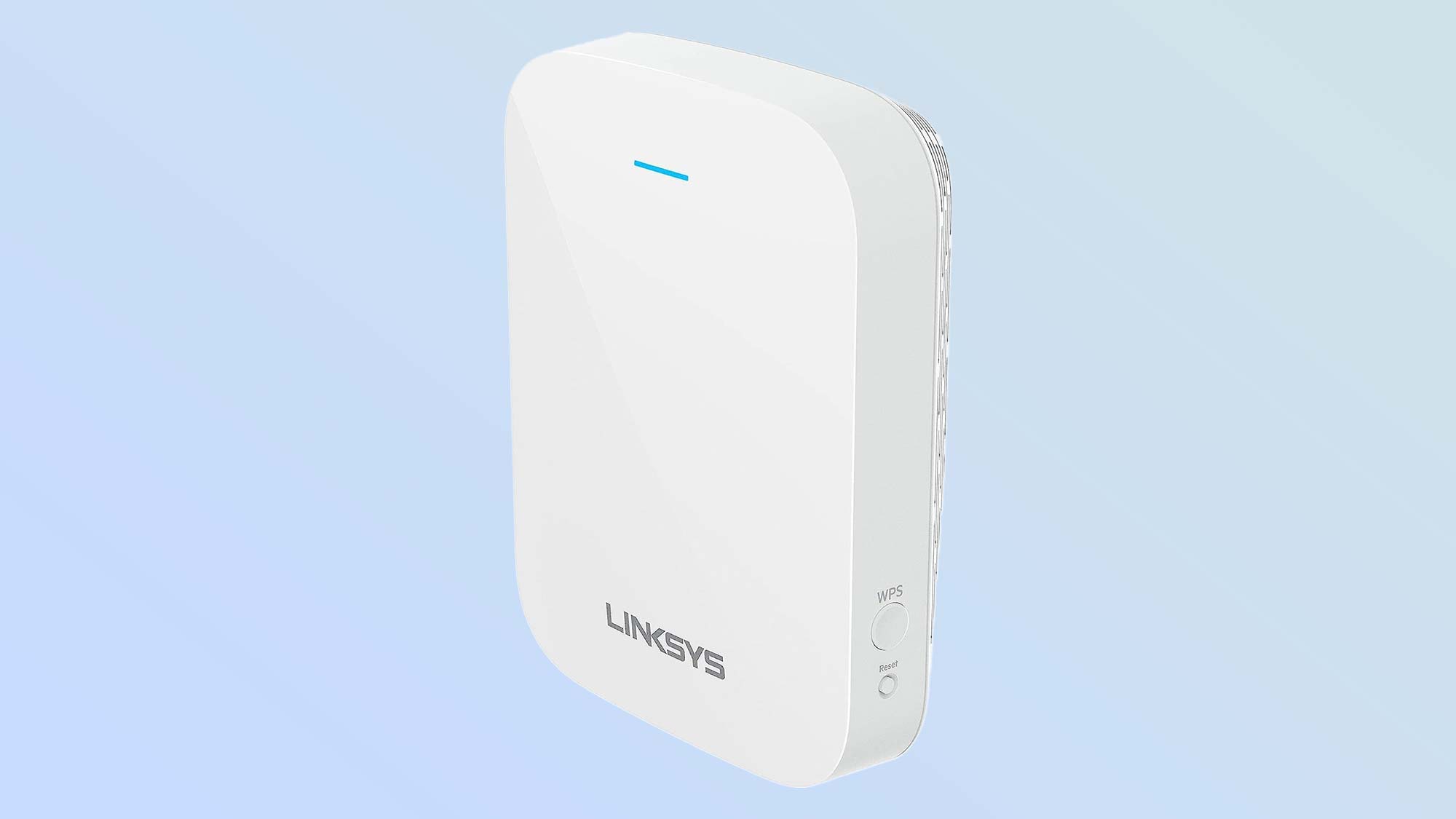
With the Nighthawk RS600 router 40 feet from the RE7350 and the Acer Swift Edge 16 Wi-Fi 7 notebook next to it, the extender yielded a throughput of 203.5 Mbps, about half what other Wi-Fi 6 extenders deliver. At the more reasonable distance of 10 feet, the throughput rose slightly to 203.7 Mbps. Good, but well below competitors like the Wi-Fi 7 RE655BE’s 719.5 Mbps result or the Wi-Fi 6 RP-AX58’s 490.2 Mbps.
When the repeater was set up at 40 feet from the router, the extender only exchanged 80.6 Mbps, well at the back of the pack. It had a 110 foot range that was only beaten by the RP-AX58 extender.
| Row 0 - Cell 0 | Asus RP-AX58 | Linksys RE7350 | Netgear EAX17 | TP-Link RE655BE |
10 feet | 490.2 Mbps | 203.7 Mbps | 383.1 Mbps | 719.5 Mbps |
40 feet | 201.1 Mbps | 80.6 Mbps | 197.9 Mbps | 376.7 Mbps |
The RE7350 was able to send emails, stream 4K videos and play music on connected devices but it lacks power-conservation settings to cut its 6.3 watt power draw. This translates into an annual power bill of roughly $8.80 if it’s left on 24/7 and you pay the national average of 16 cents per kilowatt hour of electricity.
Over two weeks of daily use, its passive cooling worked well, with the RE7350 never getting over 96.3 degrees Fahrenheit. The hot spot was at the top.
Linksys RE7350 review: Features
Rated to handle Wi-Fi 6 transmissions, the dual-band extender uses 2x2 streams to move data over the 2.4 and 5 GHz data bands. It carries an AX1800 throughput rating, although it lacks the ability to tap into 6 GHz networks or 320MHz data channels.

The RE7350 can work as an access point or extender and takes advantage of the Wi-Fi 6 to the fullest. In addition to using beamforming, the extender works with 1024 Quadrature Amplitude Modulation (QAM) and MU-MIMO. It can connect up to 20 clients at a time.
Linksys RE7350 review: Setup and software
Unlike other networking gear, the RE7350 does without a setup and configuration app. Instead, there’s the choice between the WPS button on its side and tapping into the RE7350’s internal user interface, which was anything but quick and easy. I started by connecting to the extender’s default Wi-Fi network (“Linksys Extender Setup – 393”) and typing “extender.Linksys.com” into Chrome’s address bar.

The opening page has the Linksys license terms and auto firmware update prechecked.

I set it for wireless range extender instead of access point and picked the 2.4 and 5.0 GHz LANs to extend separately. I entered the passcode for each.

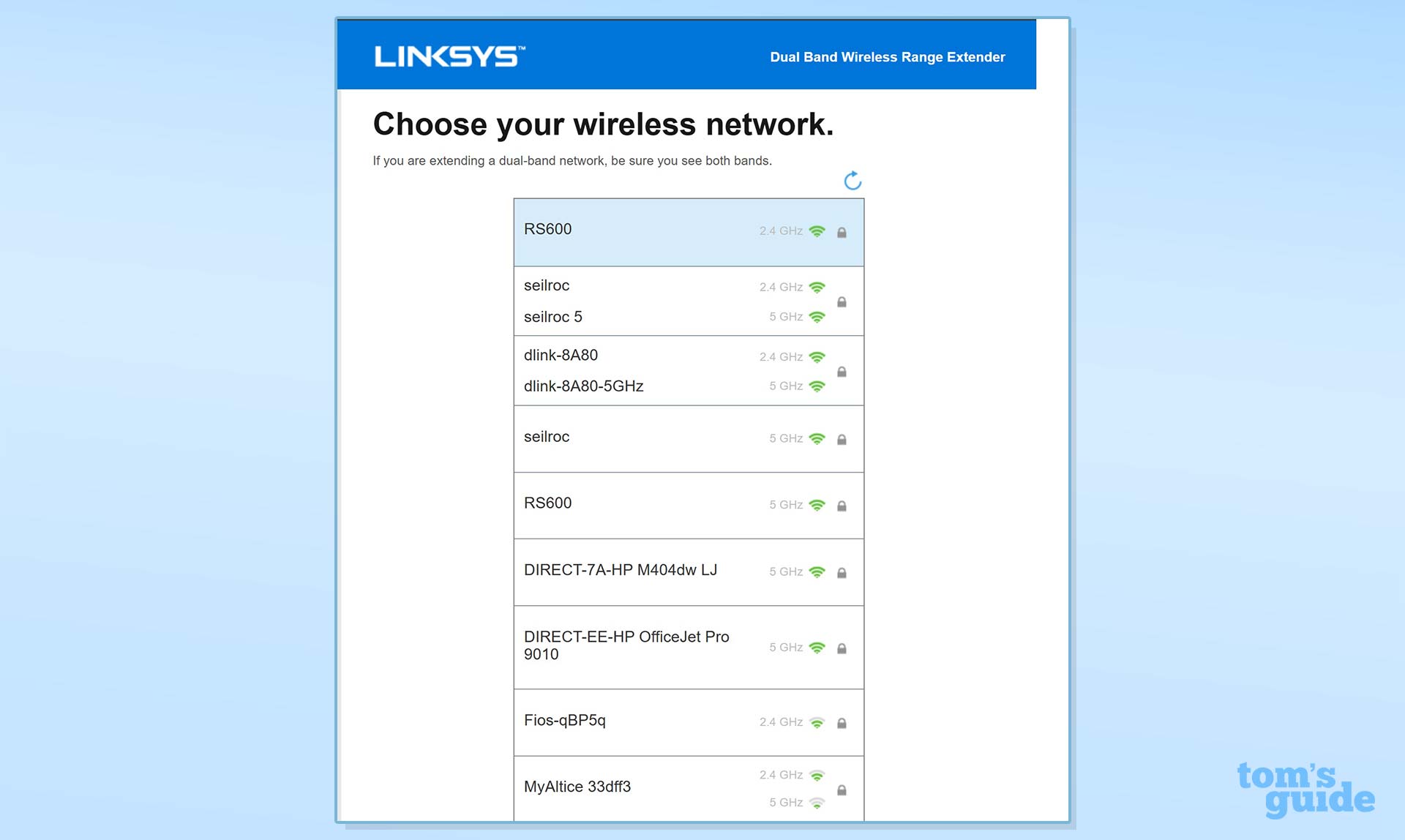
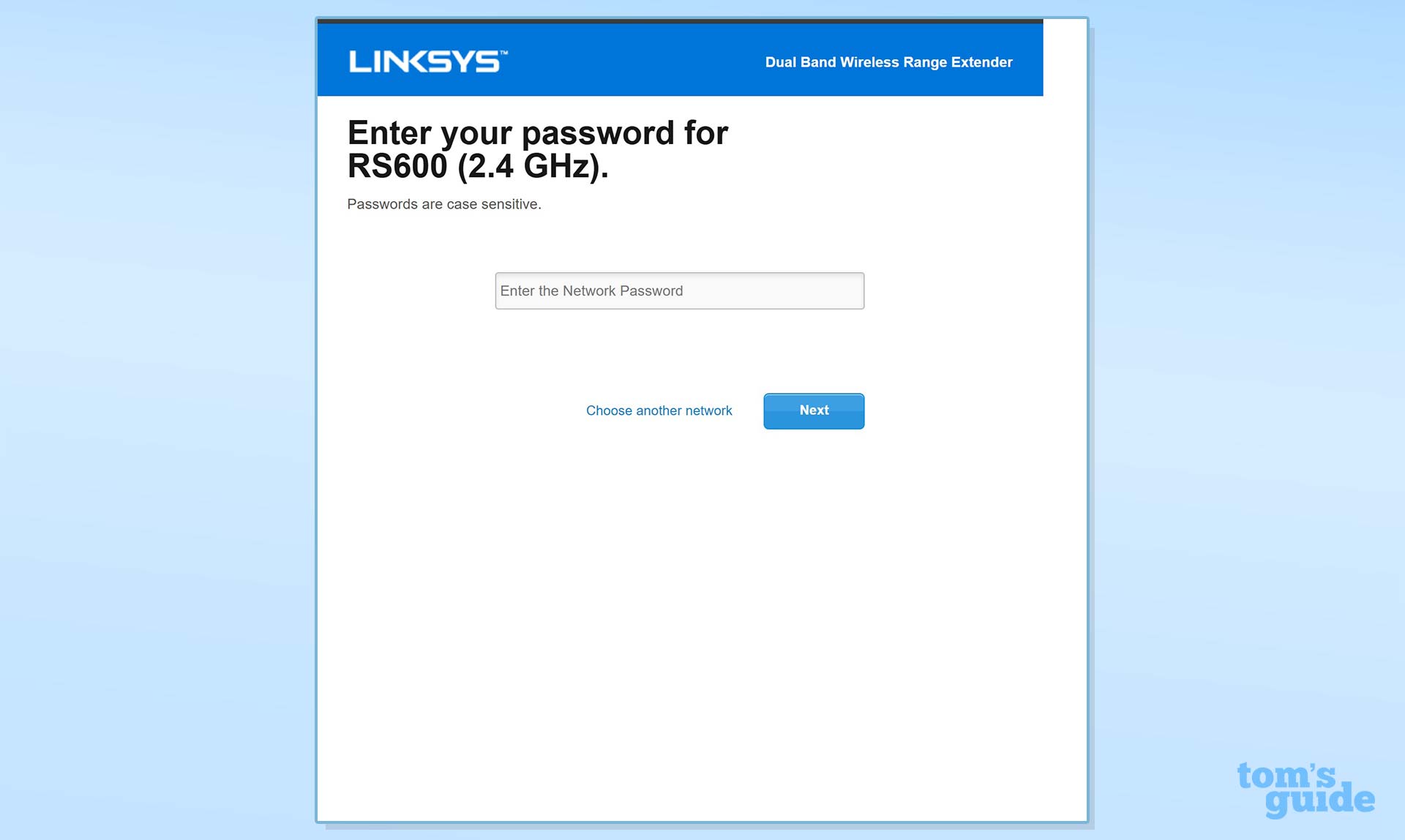
The extender had trouble connecting over the 5 GHz band although it worked on the third try. I finished up by adding an administrative password and reminder hint. The process took 13 minutes – double what it should.
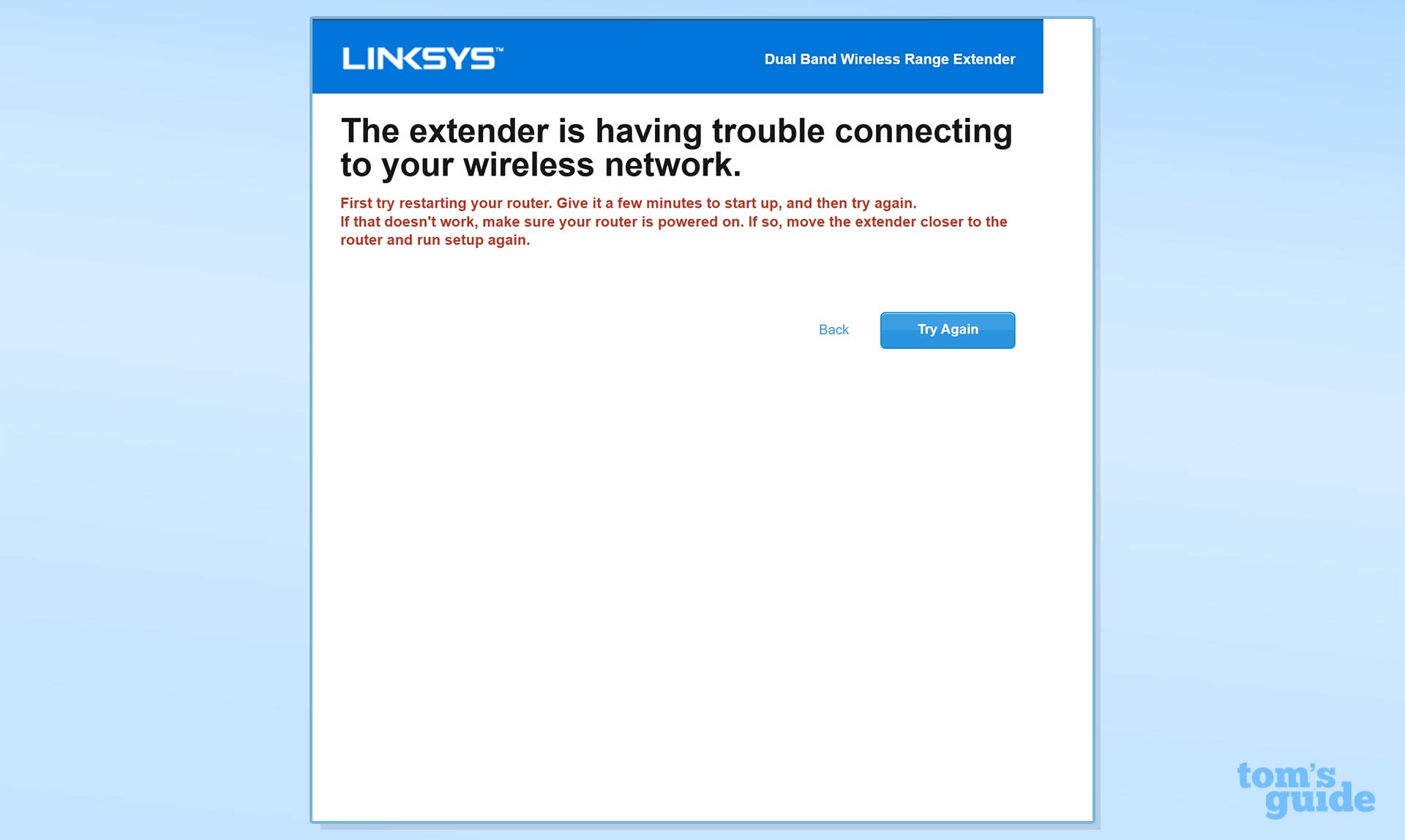
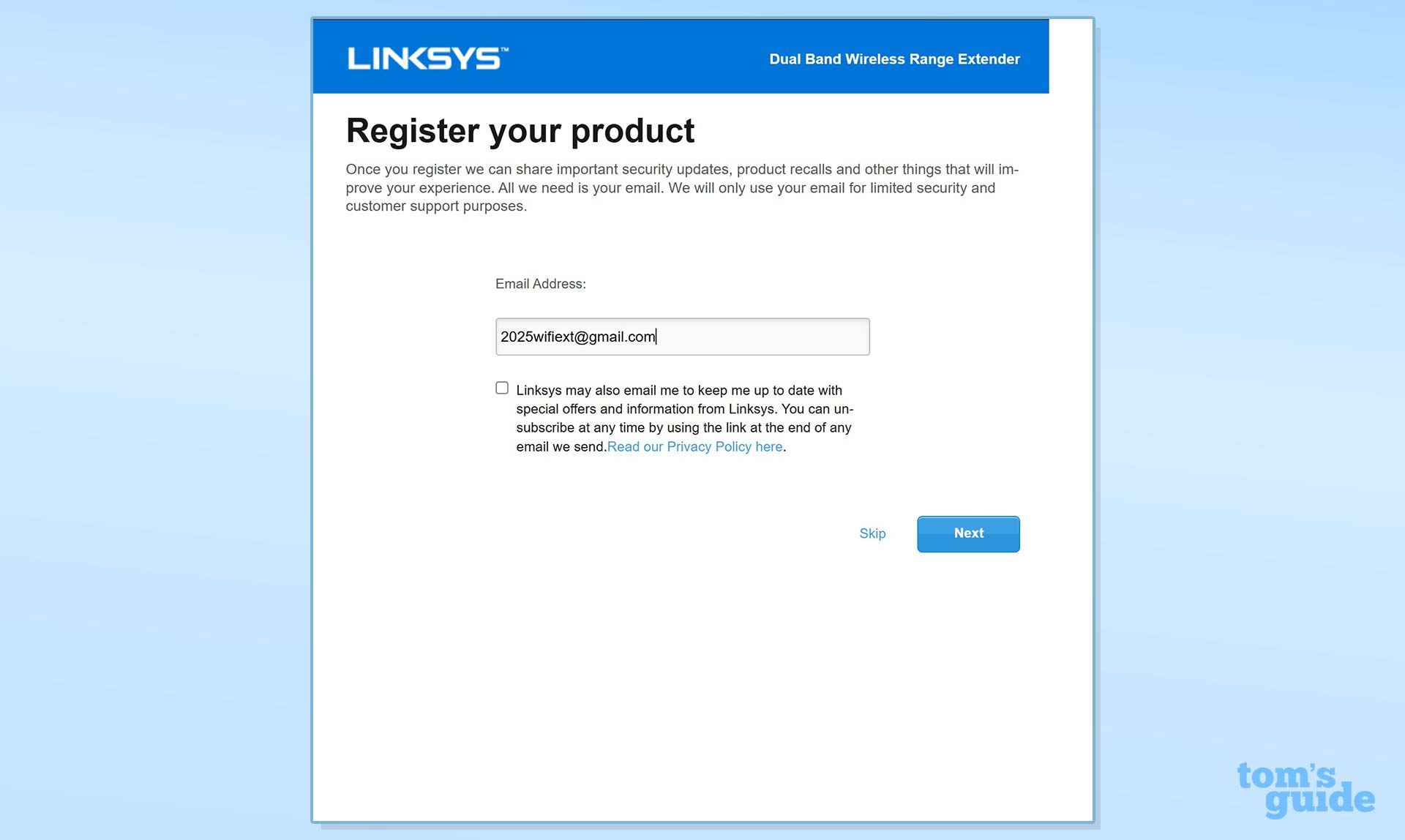
All that time and effort actually pays off with good customization options. The main page is for basic settings showing network names, passwords and connection status.

Under each network is an advanced section for channel width details. Unfortunately, the extender is limited to a maximum of 80Mhz data channels, which limits the extender’s throughput.

In addition to QOS, there’s a unique Spot Finder. Here, the extender visually tells you if you’re too far, too close or just right for a prime connection.
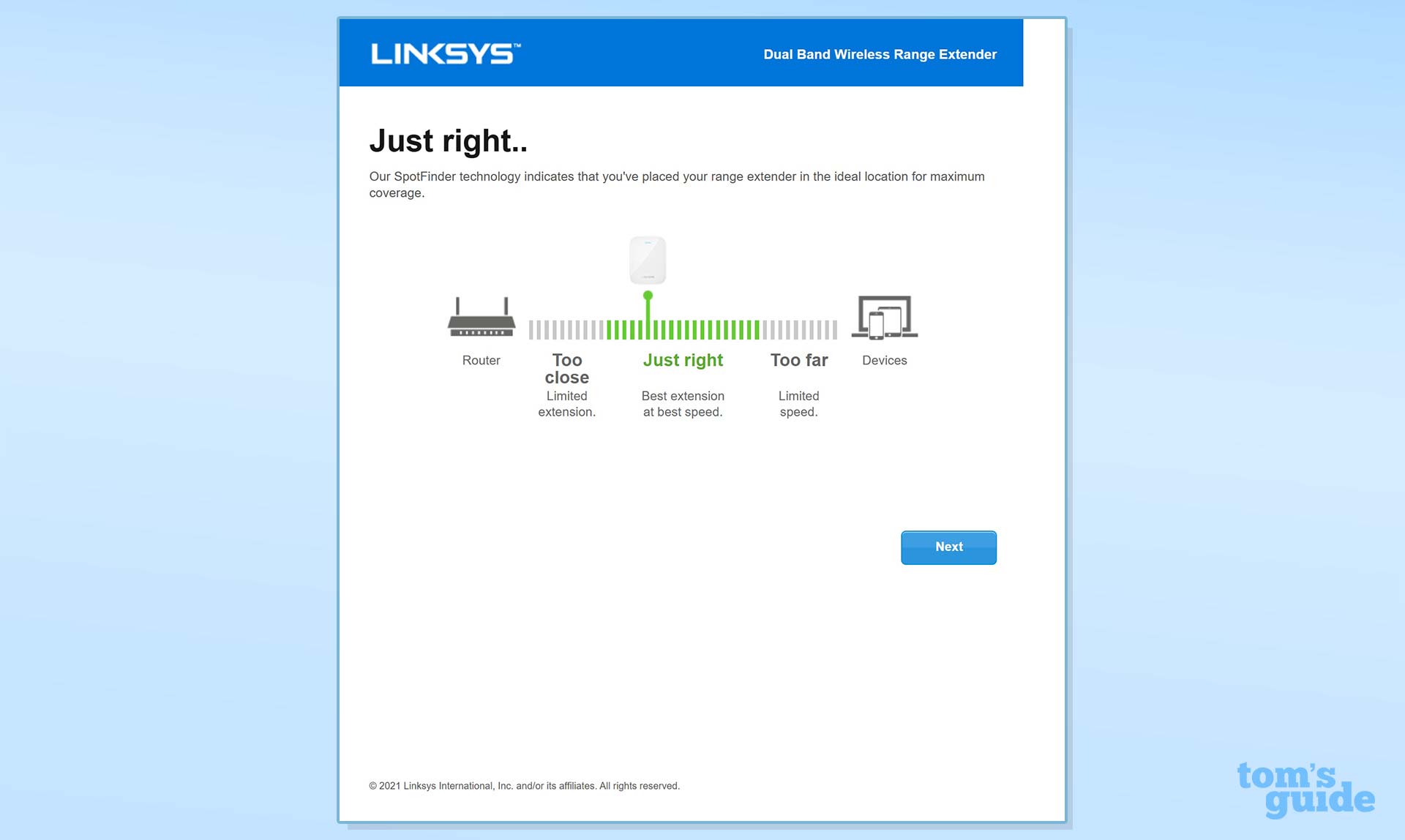
Finally, its statistics page provides excellent networking data, although in tabular and not graphic form. There are places for things like data packet count. There’s no place to turn the LED off.

Linksys RE7350 review: Warranty and support
Like most extenders, the RE7350 comes with a one-year warranty and lifetime support. That’s not as good as TP-Link’s two years of coverage but better than Netgear’s standard 90 days of support, unless you pay to upgrade.
The text-only support pages for the Linskys RE7350 may not be as pretty as its competitors, but it has what’s needed to help get the extender online and working. The FAQ section is very deep and the extender has a basic manual but the site lacks helpful setup videos.
Linksys RE7350 review: Verdict
A reliable way to fill a house with Wi-Fi, the Linskys RE7350 extender comes up short compared to the competition in terms of speed but had excellent range. Based on Wi-Fi 6, it can’t use the 6 GHz high performance data band or 320MHz data channels and its 1 Gbps Ethernet port can’t compare to the 2.5 Gbps ports that are starting to show up on extenders. Plus, unlike the others, it lacks an app for setting up and configuring the extender.
That said, the RE7350 offers a good combination of price at $70, reliable operation and an excellent assortment of setup choices available. In fact, it’s for those who care less about raw speed and more about tweaking and configuring the network.
Brian Nadel is a freelance writer and editor who specializes in technology reporting and reviewing. He works out of the suburban New York City area and has covered topics from nuclear power plants and Wi-Fi routers to cars and tablets. The former editor-in-chief of Mobile Computing and Communications, Nadel is the recipient of the TransPacific Writing Award.
You must confirm your public display name before commenting
Please logout and then login again, you will then be prompted to enter your display name.


